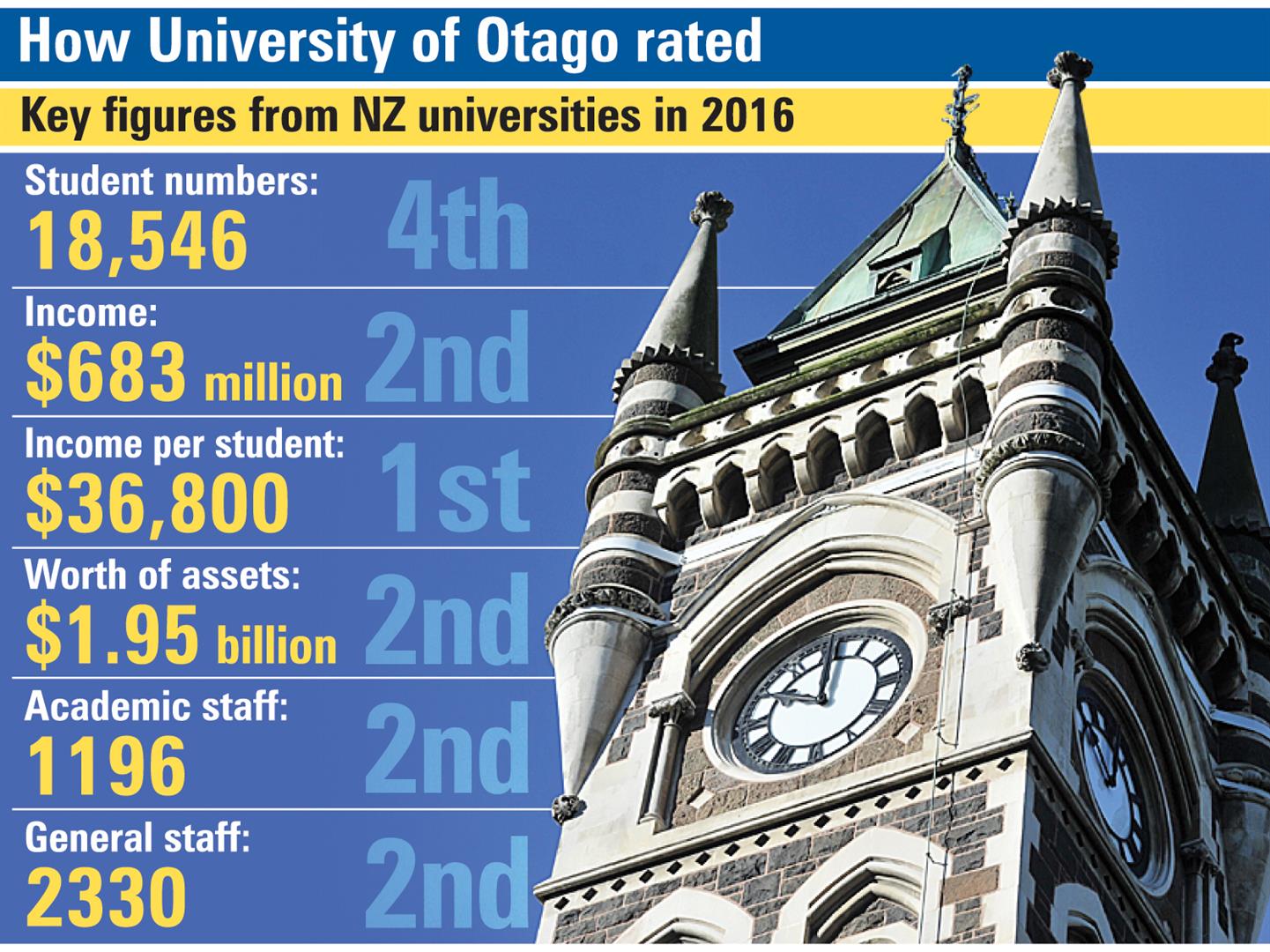
However, in recent years Otago University has gone from having the second-most students to the fourth-most, with AUT and Massey University moving to second and third place respectively, behind the University of Auckland.
The comparison of all New Zealand universities' annual reports, except Lincoln's, which was prepared for Otago University's finance and budget committee, showed Auckland University continued to dwarf other universities on almost all measures.
This included student numbers, where it had 33,118 equivalent full-time students (efts), compared to second-placed AUT with 19,971.
Despite being in the middle of the pack when it comes to student numbers - it had 18,546 efts - Otago University continued to hold its own as New Zealand's second university when it came to income, numbers of academic staff and assets.
Otago University had income of $683million, which was well above third-ranked Massey University, with income of $490million.
The comparison showed Otago University's income remained larger than similar-sized universities, AUT, Massey and Victoria, because it attracted significantly more research income.
It had assets, mostly made up of property, plant and equipment, worth $1.95billion, which had climbed from a value of $1.63billion the previous year.
This was second only to Auckland University which had assets worth $3.24billion.
For the first time, the comparison included a breakdown of the number of general staff and the ratio of general staff against academic staff.
The university is coming to the end of a review of its general staff, which was initiated in part because it employs more general staff than other universities.
This was backed up by the comparison, which showed it had 1.9 general staff for every academic staff member, which was the most of any university and well above the average of 1.1.
Auckland and Waikato Universities came in second with a ratio of 1.4 general staff for every academic staff member.
The comparison did not include the University of Canterbury, which did not provide the number of general staff it employed.
Advertisement












!["[The sector is] less competitive than groceries and banks that the government spend a lot of...](https://www.odt.co.nz/sites/default/files/styles/odt_landscape_small_related_stories/public/story/2025/04/billie_moore.jpg?itok=GN8uIA4p)
